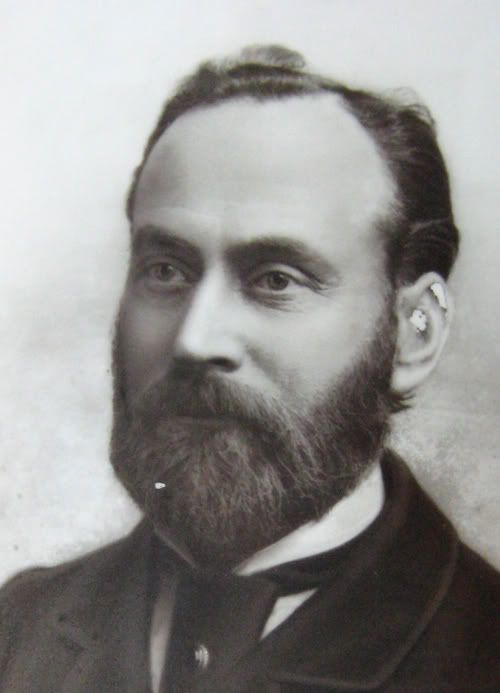Dave,
your print was most likely made by coating glass plates with a sliver nitrate or silver halide solution. The glass plates were at first prepared by the photographer himself mixing up the chemicals and plating the glass. When the plates were exposed and processed you ended up with a negative of the scene.
The image you display looks to be 11 x 14 which would also be the size of the camera since it was made as a contact print, not an enlargement.
The print is most likely sensitized with platinum. The reason for platinum was the image would last indefinetly when exhibited in a room with sunlight. Silver nitrate or silver halide solutions will deteorite much as a solution gilded mirror. Platinum would also not need to be backed up, as shown in your glass. Glass negatives on the other hand had to be stored in boxes in the dark, otherwise the image would eventually fade.
Platinum paper prints are still made today in much the same way, using paper as the medium for the print. The photographer mixes his own chemicals, coats the paper, enlarges and makes the print.
Such a print today, processed under archival standards could last in excess of 300 years. The areas the highlights appearing blown are probably from mishandling at some point, as old glass plates had a tonal range that cellulose film rarely attain - the ability to get good tone in the blackest black, discernible detail in the brightest white.
Have you shown this to any art dealers? At £10 you made a good find! Unless there a large quantity of this type of print, you may have something valuable. But then again it's nice to hold onto and enjoy with all your other glass work!
Here is an example of a photo made from glass plates we donated to the San Francisco Historical Society:
https://handletteringforum.com/forum ... =milk#2941
I wish I'd kept more. There were photos from the 1800's of Half Dome and photos from around San Francisco Bay before any of the bridges were built.



 Denver Chapter of the Letterheads
Denver Chapter of the Letterheads